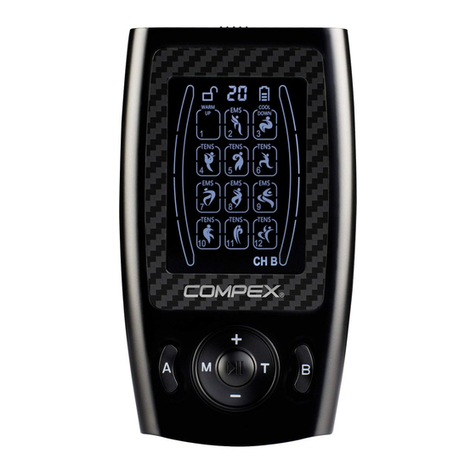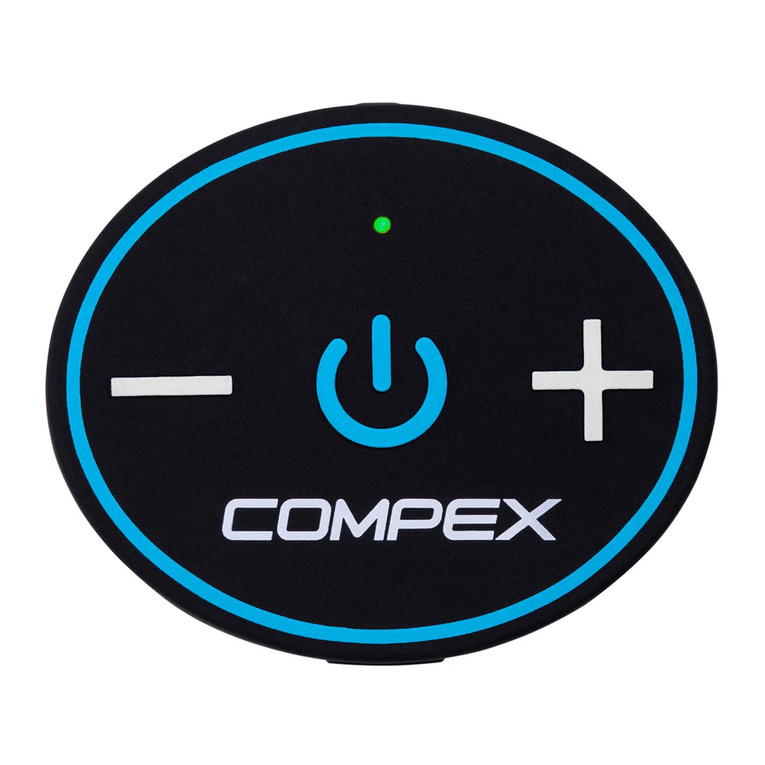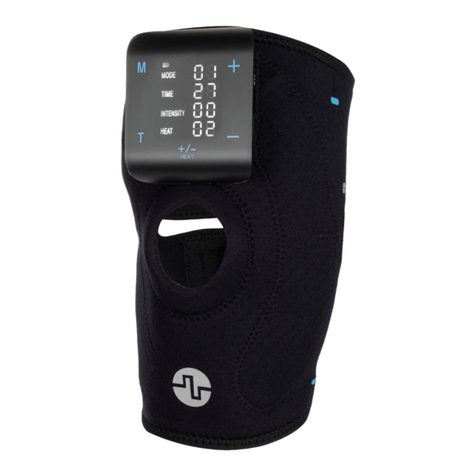
5
English
• Do not use the Compex or
m
i-SENSOR
system if you are connected to a high-
frequency surgical instrument as this
could cause skin irritation or burns under
the electrodes.
• Do not use the Compex or
m
i-SENSOR
system within X metre (see EMC table) of
short wave or microwave devices as this
could alter the currents generated by the
stimulator. If you are in any doubt as to
the use of the Compex close to another
medical device, seek advice from the
manufacturer of the latter or from your
doctor.
• Do not use the Compex stimulator or
m
i-
SENSORsysteminareaswhereunprotected
devices are used to emit electromagnetic
radiation. Portable communications
equipment can interfere with electrical
medical equipment.
• Only use stimulation cables supplied by
Compex.
• Do not disconnect any stimulation cables
during a session while the stimulator is
switched on. Switch the stimulator o
rst.
• Never connect stimulation cables to an
external power supply. There is a risk of
electric shock.
• Only use rechargeable battery units
supplied by Compex.
• Never recharge the stimulator without rst
disconnecting the stimulation cables.
• Always use the charger provided by
Compex to recharge the batteries.
• Never use the Compex or the charger if
it is damaged (case, cables, etc.) or if the
battery compartment is open. There is a
risk of electric shock.
• Disconnect the charger immediately if
the Compex“bleeps”continuously, if there
is abnormal heating or smell, or if smoke
comes from the charger or the Compex.
• Do not recharge the battery in a conned
space (carrying case, etc.). There is a risk of
re or electric shock.
• Keep the Compex and its accessories out
of reach of children.
• Donotallowanyforeignbodies(soil,water,
metal, etc.) to penetrate the Compex, the
battery compartment and the charger.
• Sudden temperature changes can cause
condensation to build up inside the
stimulator. To prevent this, allow it to reach
ambient temperature before use.
• Do not use the Compex while driving or
operating machinery.
• Do not use the stimulator at altitudes of
over 3,000 metres.
Where never to apply the electrodes
• In the vicinity of the head.
• Counter-laterally, i.e. do not use two
poles connected to the same channel on
opposite sides of the body.
• Onor nearskin lesionsofanykind(wounds,
swelling, burns, irritation, eczema, etc.).
Precautions when using the
m
i-SENSOR
system
• To access the Compex’s
m
itechnology
functions, it is essential to connect the
m
i-SENSOR cable before switching on the
device.
• Avoid connecting the
m
i-SENSOR cable
when the Compex is switched on.
• Do not disconnect the
m
i-SENSOR cable
while the sensor is being used.
• To work correctly, the
m
i-SENSOR system
must not be blocked or subjected to
pressure.






























